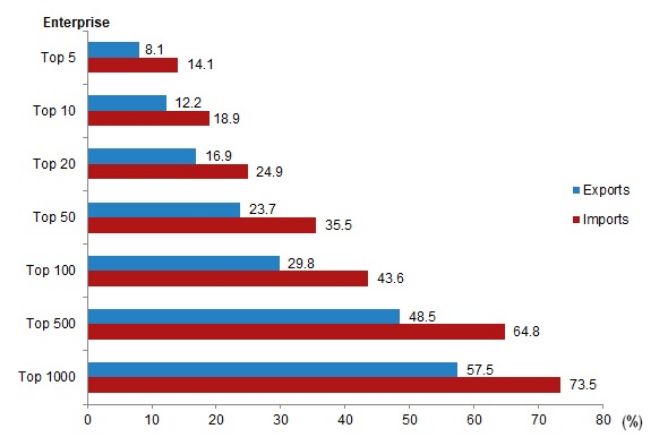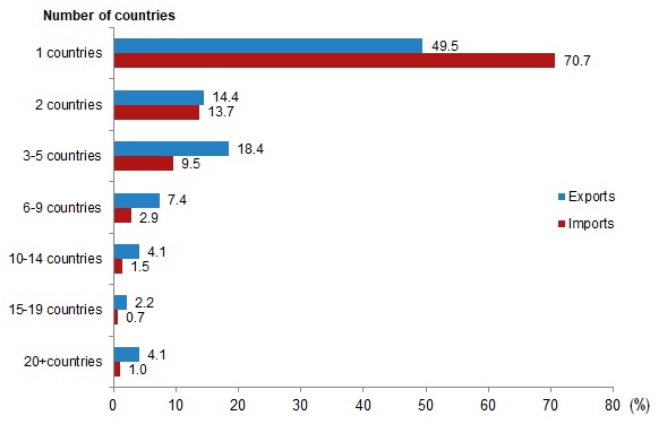The number of importing companies in Türkiye has increased by two and a half times over the past five years. According to data from the Turkish Statistical Institute (TurkStat), the surge is primarily due to challenging production conditions, particularly fluctuating exchange rates.
The statistics show a 265% rise in the number of importers since 2018, with 83.9% of importing companies now consisting of firms with one to nine employees, indicating that imports have spread to a broader base of businesses.
Number of importers nearly quadrupled
TurkStat’s “External Trade Statistics by Enterprise Characteristics,” which has been regularly published since 2018, highlights the growing shift toward imports within Türkiye’s real sector. From 2018 to 2023, the number of importers has nearly quadrupled, growing from 69,000 to almost 253,000.
During the same period, the number of exporters rose from 76,000 to around 140,000.
Small businesses drive import growth
The sharp increase in importing companies is most noticeable among smaller firms. In 2023, 83.5% of importers had one to nine employees, up from 57% in 2018. Micro-enterprises, which accounted for 8.6% of total imports by value in 2018, increased their share to 12.9% by 2023.
Larger firms, with more than 250 employees, saw their share of total imports decrease, from 64% in 2018 to 55.5% in 2023. Similarly, large firms now account for just 1.5% of all importers, down from 3.9% five years ago.

Exports and imports in 2023
In 2023, Türkiye’s exports grew by 0.6% year-on-year to $255.77 billion, while imports fell by 0.5% to $361.77 billion. The number of companies exporting goods increased by 22% over the previous year, rising from 114,155 to 139,349.
Meanwhile, the number of importing companies surged by 46% to reach 252,908.

Shift in foreign trade balance
The balance between exporting and importing firms has shifted in favor of importers in recent years. Until 2021, Türkiye consistently had more exporters than importers. However, in 2021, the number of importing firms overtook exporters for the first time.
By 2023, the gap widened, with 113,559 more importing firms than exporting firms, nearly doubling the ratio of importers to exporters.

Decline in industrial share of foreign trade
Although the industrial sector remains the dominant force in Türkiye’s foreign trade, its share has been gradually declining.
In 2018, 57.5% of exports were generated by industrial companies. By 2023, that figure had fallen to 56%. The role of trade-focused firms, on the other hand, has grown, accounting for 39.4% of exports, up from 38.9% in 2018.
The trend is even more pronounced on the import side. In 2018, industrial firms were responsible for 56.5% of Türkiye’s imports, a share that fell to 46.8% in 2023. Over the same period, imports by trade-focused firms rose from 31.6% to 39.3%.

Challenges facing domestic production
The shift toward imports can be attributed to several factors, including rising production costs and the depreciation of the Turkish lira, which has made domestic manufacturing more expensive.
These challenges have accelerated the shift towards importing goods, as companies find it increasingly difficult to compete in a global market where production costs are lower.
